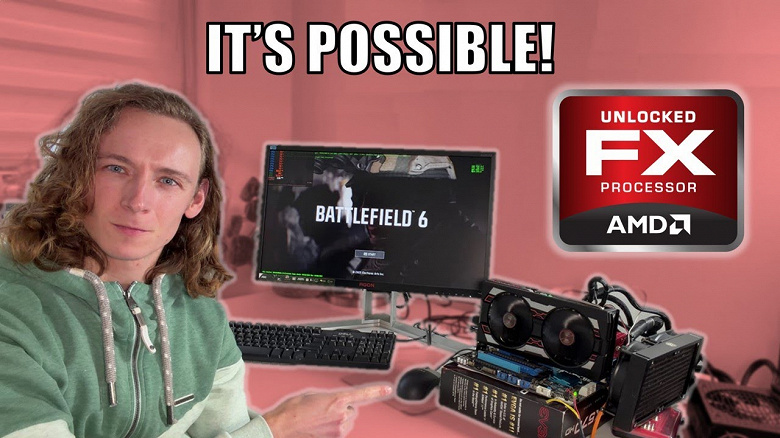Battlefield 6’s Beta Sparks Interest
The much-anticipated release of Battlefield 6 has already secured an impressive amount of attention and favorable feedback from the gaming community, thanks to its early-access beta version. However, the latest buzz surrounding the game is underscored by a significant technical requirement that may prove cumbersome for some players.
Technical Hurdles for Legacy Systems
To run Battlefield 6, players must enable SecureBoot technology – a precaution designed to ensure software integrity during boot time. While this technology enhances security, it poses a problem for owners of older PCs equipped with processors that lack support for this feature.
Tech vlogger Fully Buffered tackled this issue by testing the game on a system powered by the AMD FX-9590 processor, which was one of the first platforms to support SecureBoot when it debuted in 2013. While the FX-9590 was AMD’s flagship release at the time, its underlying Piledriver architecture was subject to debate, stemming from its evolution of the Bulldozer architecture which had mixed reviews.
Performance Woes Despite Compatibility
The test revealed that while Battlefield 6 could launch without compatibility for TPM – another listed requirement – the performance was less than satisfactory. The FX-9590, despite its eight-core setup, struggled significantly. The CPU was maxed out at a 100% load, while the paired Radeon RX 5700 GPU remained underutilized at merely 25% capacity. This bottleneck resulted in the system managing up to 40 frames per second on minimum settings, which is generally subpar for a smooth online multiplayer experience.
Challenges like these are exacerbated by constant starter lags, highlighting the critical limitations users may face when attempting to run new, high-demand games on older hardware platforms.
Broader Industry Implications
This situation typifies an ongoing trend where technological advances in gaming necessitate system upgrades, thereby pushing consumers and businesses to frequently reassess their hardware capabilities. As gaming titles strive to leverage cutting-edge technologies, the requirement for SecureBoot reflects a shift towards enhanced security measures that come at the expense of older system compatibility.
Market watchers note that such dynamics may fuel further innovation among hardware manufacturers, reinforcing the ongoing cycle of tech development. For the consumers, however, it underscores the urgency to keep pace with technological evolutions to fully enjoy the latest in gaming offerings.

Cover image of video





